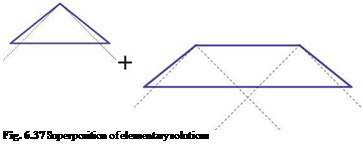Rectangular Wings
Consider supersonic flow over a rectangular wing, Fig. 6.38.
The pressure is constant along rays from the tips of the leading edge. From symmetry of pressure in the tip region, it may be shown that the average pressure coefficient is half the two-dimensional pressure coefficient. One finds the three-dimensional lift coefficient CL from (see Ref. [11]) [6] 2
|
|
 |
 |
Fig. 6.39 Evolution of loss of lift coefficient with Mach number
The loss of lift due to tip effect is plotted in Fig. 6.39.
Wings with subsonic edges are more complicated, due to the singularity of thin airfoil theory there.












